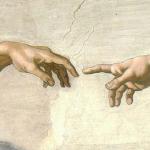JN Figgis isn’t a household name these days, but he was an important Christian political thinker of the early twentieth century. Raised in a Calvinist home, he abandoned his childhood faith for some years, before returning to Christianity while at Cambridge.
But his real “conversion,” according to David Nicholls (The Pluralist State) came later, during his time as a rector at Marnhull: “Gone was the optimistic humanism of his Cambridge days; he became, at once, more evangelical and more catholic in his theology. In 1907 he left Marnhull to join the Community of the Resurrection at Mirfield, an Anglican monastic community founded by Charles Gore. Figgis’s Hulsean Lectures, given at Cambridge in 1908-9, shocked his former colleagues. ‘Why,’ he demanded from the pulpit of the university church, ‘are we to suppose that there is more risk in believing too much than too little?’ The gospel is a message of human sin, divine forgiveness and of the need for redemption. He pointed, almost with relish, to the otherworldly and mysterious aspects of the Christian faith which give it a distinctive appeal. He firmly rejected liberal attempts to present a gospel shorn of the supernatural, in order to make it compatible with the prejudices of nineteenth century materialism – prejudices which he claimed were in any case being abandoned by contemporary intellectuals” (1-2).
His reading of Nietzsche alerted him to the crisis that faced European civilization. Once upon a time, skeptics attacked Christianity for hypocrisy, for failing to live up to Christianity. Nietzsche attacked the ideals themselves.
In a sermon delivered prior to World War II, Figgis warned: “The forces of civilisation are imposing; but apart from Christ they are visibly dissolving. Its tall towers are shaking, and the splendid spires of the edifice of the western world are crumbling. Catastrophe is threatening. We can almost hear the thunders of the avalanche of war – war on a scale unknown. Hardly does the world even look stable any longer. It is not like the forties of Victorian complacency, but looks all tottering – tottering” (5).












